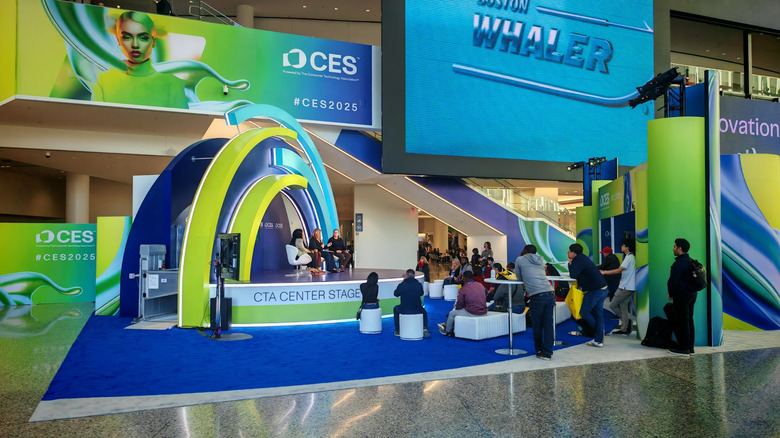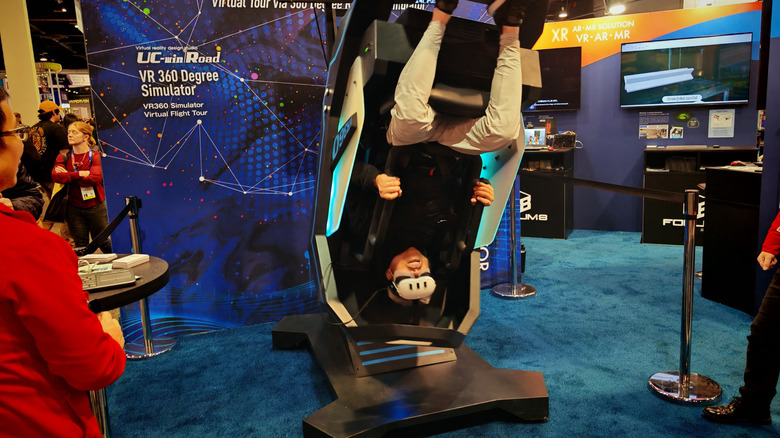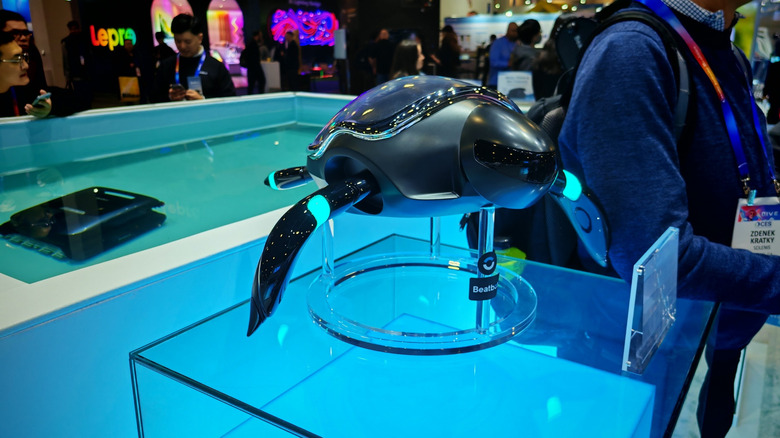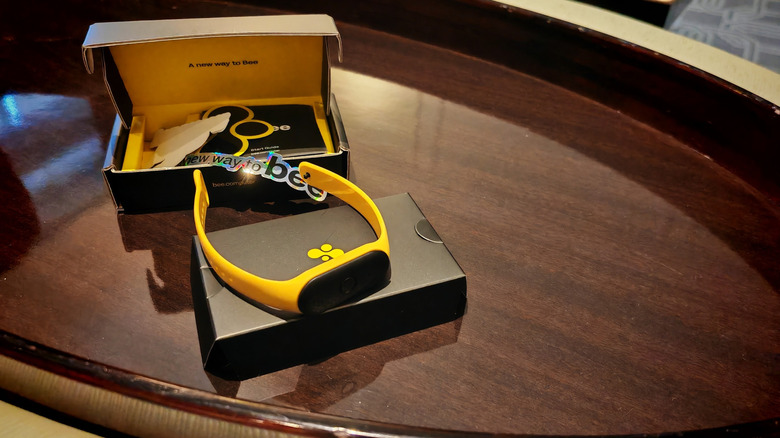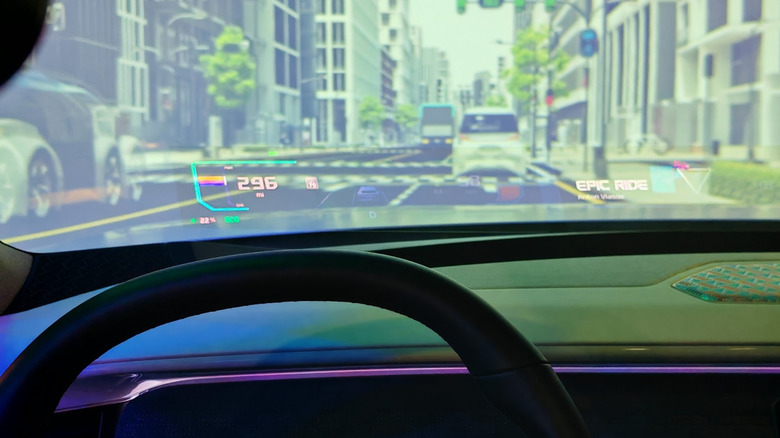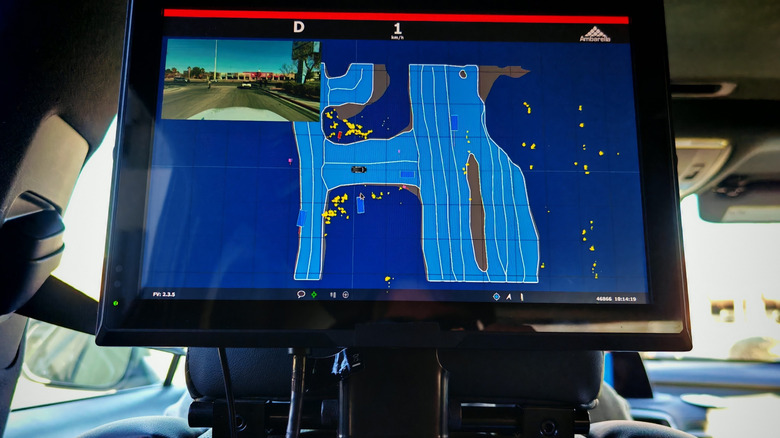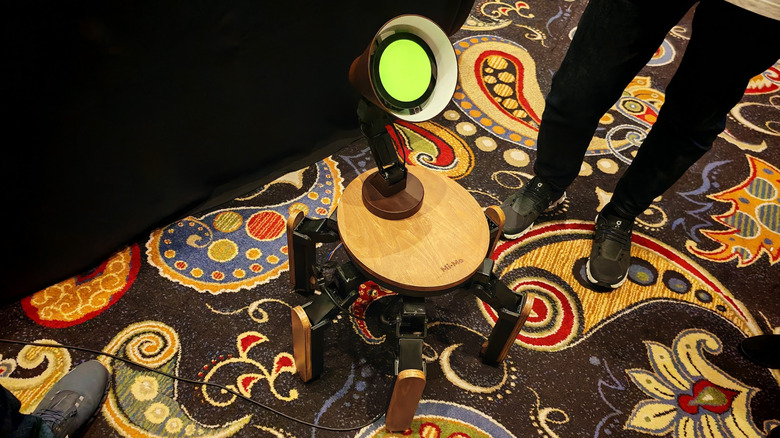CES 2025 Day 4: Leaving Las Vegas
We managed to make it to the end of CES 2025! As the world's biggest tech trade show closes its doors until 2026, we'll bring you another selection of the most interesting tech we saw on the show floor.
So far, we've seen comedians give keynotes, smelled a laptop or two, and tried out some portable gaming products. Still up ahead we have walking tables, a head turning VR experience, and some tech you may actually see in your car before the decade is out. Of course, there's plenty of AI. The AI focus everything seems to have is not going anywhere soon.
Most interesting doesn't necessarily mean best, we have an actual "best of" list for that. Plus, some of the items listed aren't even being sold to consumers, but that doesn't stop them being entertaining to observe, talk about, and (when warranted) make fun of. So, for the last time from the show floor, here are some cools things we saw before departing Sin City.
A VR experience that will make your head spin
VR is all about immersion, but sight and sound can only take you so far. The next step is obviously some kind of platform that will bring forces and movement into your virtual world—like racing chairs that move in time with the game and bring a bit more feeling to the driving experience.
Forum8's VR360 simulator takes things to the next level. Built for things like flight sims, the chair can tilt forwards and backwards as you climb and descend. But that's not the interesting part. It can roll 360 degrees in either direction, so if you hit a barrel roll the chair will spin you along with your virtual plane.
Yes it's a bit gimmicky and missing things like actual G-forces, but it's a brilliant way to add a lot of immersion if you're serious about your sim experience. The chair has also been present at CES for the last few years and will likely be back. So, if you attended and missed the chance to test your stomach's strength — keep an eye out for it in 2026.
AI is even taking the turtle's jobs!
Beatbot is well known for its pool cleaning robots, but a different kind of aquatic AI-powered automaton was the most eye-catching thing at the company's booth this year.
The RoboTurtle is exactly what its name suggests — a turtle sized and shaped robot. Beatbot says it can be used by researchers to monitor things like water quality, or survey aquatic landscapes. It's also solar-powered, so it can do its job for a long time. It's not going to be available for consumers but may be of benefit to scientists as it can theoretically blend into the environment and allow them to study an area without spooking the actual wildlife inhabiting it. However, there may be a mild exception to that.
We asked what would happen if a shark or whale ate the AI-powered turtle, as they sometimes do. Robot parts and battery contents aren't too good for a sea-predator's digestion after all. Beatbot told us that they didn't know exactly what would happen if RoboTurtle became a shark snack — but claims the turtle is being vigorously tested for safety.
Your new smart assistant is always listening
AI is here to stay and it's something we've naturally seen a lot of at this year's CES. One of the more interesting demonstrations was "Bee" an AI assistant that functions through an app and small device.
The device in question is a bit like an older Fitbit in terms of form factor. You can also pop it out of its rubber watch strap and attach it to something else if you please. The assistant itself will listen in, take notes, provide summaries of conversations, answer questions, and can message other Bee users. It's "always on" unless you press a button telling it to stop listening. The battery lasts around four days.
At first glance, Bee could be compared to the Humane Pin – another wearable AI assistant we saw during and after MWC 2024, and something that failed spectacularly on launch. But Bee has avoided two of Humane's biggest issues. The device price is lower, much lower in fact. It's available for less than $50. There is a monthly subscription but that's also cheap and not mandatory. $12 a month gets you access to things like Google Calendar, increased functionality, and more storage.
Hyundai shows us the future of in-car displays
One of the innovations from CES that you are likely to see comes courtesy of Hyundai Mobis. At its press conference, the Korean company revealed what it claims is the world's first holographic windshield display–and it's something you may see in your own vehicle by 2027. Hyundai Mobis didn't do it all alone, the display was developed in tandem with German optical company ZEISS, and the results are pretty fantastic.
It works because of a special film that is applied to the windshield. That film contains a Holographic Optical Element (HOE) "which utilizes the principle of light diffraction to project images and videos directly to the viewer's eyes."
When we checked it out for ourselves, the first things that stood out were the image's vibrance and brightness. It's almost TV quality, which is handy as theoretically the film that makes it work could be applied to the whole windscreen. For now, it's present on a stretch of glass just above the dashboard where you would expect the HUD to be in a regular car.
You have to be in the right spot to see anything, so the driver and passenger will only be able to look at their own portion of the screen. From a different angle, it all just looks like clear glass. This means the passenger can enjoy a movie or TV show without taking the risk of distracting the driver. The driver will be able to use their own section of screen for navigation, or to display vehicle information for now. But they'll likely be able to watch a movie too when self-driving vehicles both improve and become legal.
Self driving vehicles are improving
Speaking of self-driving cars, one of the more interesting mornings we had during this year's CES didn't take place in the Las Vegas Convention Center, the Venetian, or Mandalay Bay. Instead, we were bundled into a vehicle clad with LiDAR sensors and radar units. The car was kitted out by Ambarella, a semiconductor company that is hoping to bring its self-driving tech to the roads in the near future. Ambarella also has a self-driving truck that is currently making deliveries on presumably private roads in Texas.
The demo took place on public roads, so a human was actually doing the driving. But it gave us a chance to ask questions and see exactly what the car sees when it's on the streets. This includes information it has gathered from mapping software, along with what the cameras and sensors fitted to its bodywork are picking up. It can predict where streets are going to be even if it can't see them, all the while flagging things like other vehicles and road hazards. This information will then be used by an AI model to inform its decisions and ultimately dictate what the vehicle does on the road.
The model is constructed similarly to an LLM but trained on pictures instead of words. It uses this knowledge to contextualize things. It will be able to spot a parked vehicle and overtake it, or drive past a bus queue instead of stopping in a panic because ten people are standing on the side of the road. There's even a chance it could spot something like a nail, which people can't really do and make an adjustment to spare your tires.
An unbelievably expensive end table
What better ways to end things than with an end table? That's what they're for after all. But remember, this is CES, so the tables do come with a techy twist.
The one pictured above is Mi-Mo, a robot designed by a company called Jizai. It's a bit like something out of a Pixar movie that tumbled into real life. Its face is a lamp, and the table legs work as actual legs in this case.
While it may be endearing to fans of furniture and Pixar movies, Mi-Mo is essentially useless. I asked if I could put something on it and have it taken that object to a different location, but it turns out you can't even use it as a table. By the way, it also costs about $30,000.
It can walk around, look at people with its lamp "face," and offer you a shake of its leg, like a wooden dog offering a paw. A cheaper, smaller, version is available but that's still several thousand dollars and even more useless somehow. So, while AI may be taking the turtle's jobs, your job, and your dog's job, your furniture will still probably be useful in the nightmarish hellscape that is the coming decades.
